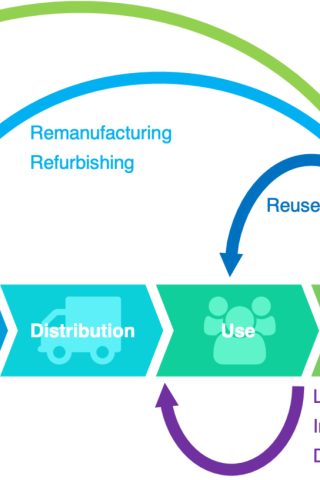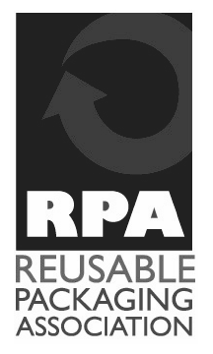Responsible Investor, by: Simon Smiles, Nov 19th, 2020
Sustainable investing is widely promoted as positively contributing to society and the environment, whilst delivering attractive financial returns. However, within fixed income, sustainable investing is analogous to a rainbow: appealing to gaze at from afar, but look closer and the colours disappear and there is little of the promised sustainable gold or lucky leprechauns.
The most widely used sustainable investing practices – exclusion, integration and engagement – don’t work particularly well in fixed income. They lack transparency, adoption, and actual impact:
Exclusion
Refusing to purchase the securities of issuers – has no impact in a fixed-income market where primary issuance is typically more than three times oversubscribed. And in the larger secondary market, there is – by definition – a buyer for every seller.
Integration
Incorporating material sustainable factors into investment decisions has lower adoption in fixed income than equities. Bonds’ finite tenor make it less likely that sustainability issues, which typically impact long-term operating performance, will manifest during the investment lifespan. While fixed income’s capital seniority ensures only the most significant unexpected sustainability events – of which there are few – will meaningfully impact the bond’s price.
Engagement
Constructively engaging issuers on sustainability matters could be impactful as bondholders can influence the cost of capital during primary issuance. However, adoption is low because engagement is unfeasible with sovereigns, which dwarf corporate issuance. And, the absence of equity voting rights makes engagement less transparent than equity investor’s votes at shareholder meetings.
Further, even the area of sustainable fixed income that has seen the fastest growth – green bonds – requires reform. Green bonds are not widely adopted by issuers and the Bank of International Settlements (BIS) finds just 2% of firms have outstanding bonds. The Climate Bonds Initiative (CBI) estimates that 2019 issuance topped $250bn. Yet, the 50% year-over-year growth in issuance still leaves green bonds accounting for just 3.5% of 2019’s bond issuance. Anecdotally, as the BIS highlights, despite the rise of electronic transport, only three car companies have issued a green bond, and Tesla, a leader in the field, isn’t one of them.
Mainstream investors also struggle to adopt green bonds in an asset allocation framework because of a significant sector skew. According to CBI, between 2012 and 2019, 33% of issuance was in the energy sector, with another 25% relating to buildings and 17% directed towards transport.
Green bonds face a lack of transparency and credible impact. The de-facto governing body (the International Capital Markets Association) supports several legal structures, and the EU’s forthcoming codification of standards may confuse further – MSCI estimates less than 20% of existing green bonds would comply with the EU’s taxonomy. The BIS’s research has questioned green bonds’ impact, finding that green bond labels were not associated with falling or even comparatively low carbon emissions at the firm level.
However, while problems exist with many fixed income sustainable investing products, there are attainable opportunities to improve upon today’s rainbow investing.
First, mainstream investors are, mostly, failing to adopt one of the most transparent and impactful pre-existing sustainable fixed income instruments – Multilateral Development Bank (MDB) debt. MDB debt is issued by development banks such as International Bank of Reconstruction of Development and the Inter-American Development Bank. With all G7 countries on the shareholder register MDB debt is AAA-credit rated, offers a 0.99 correlation to US treasuries in USD and German bunds in EUR, and typically trades with a small five to 30 basis point spread across the curve. These characteristics make it a near perfect asset allocation substitute for high quality credit fixed income exposure. As a funder of global development, the debt is impactful and is supported by thorough and transparent impact reporting.
Second, the transparency, adoption and impact of green bonds can be improved. Issuing structures can be simplified to just ringfenced use-of-proceeds with credit recourse to the issuer, as per conventional bonds. Transparency can be enhanced by legally-binding use-of-proceeds reporting, at issuance and annually thereafter. Finally, more specific, transparent, and impactful sustainability areas such as waste reduction bonds – recently pioneered by German consumer goods firm Henkel – can be developed. This would enable more firms to issue bonds, showcasing their profit-enhancing and impactful activities. As more issuers enter the market, mainstream investor adoption would increase as the current sector-biases dissipate.
Third, a new frontier of impactful sustainable fixed income should be embraced that links real-world outcomes to financial product. This would directly address the need for greater transparency, adoption and impact, and help originators finally answer the investor question: “What impact did my investment have?”
Recently, innovative loans where funding costs are tied to a sustainability metric, such as realised carbon emissions, have been originated by banks including ING and DBS. This structure rewards transparency and impact. A logical extension to accelerate mainstream adoption would aggregate the loans into senior loan funds, providing investors with diversified credit exposure and a competitive financial return.
There is a great potential to create meaningful sustainable investment in fixed income. But we need to take a realistic, pragmatic view of today and find ways to increase transparency, adoption and impact for tomorrow. We should start by encouraging mainstream investors to explicitly create allocations to the most valuable pre-existing sustainable fixed income instruments. Build on this by simplifying, yet expanding, our fastest growing sub-asset class – green bonds. Then embrace innovation with outcome-linked financing. Otherwise, we will continue to see a fleeting rainbow, rather than truly sustainable fixed income investing.
Simon Smiles retired from UBS earlier this year after more than 15 years. Most recently, he was Group Managing Director and CIO for Ultra High Net Worth Clients, establishing and running the wealth management sustainable and impact investing teams.







